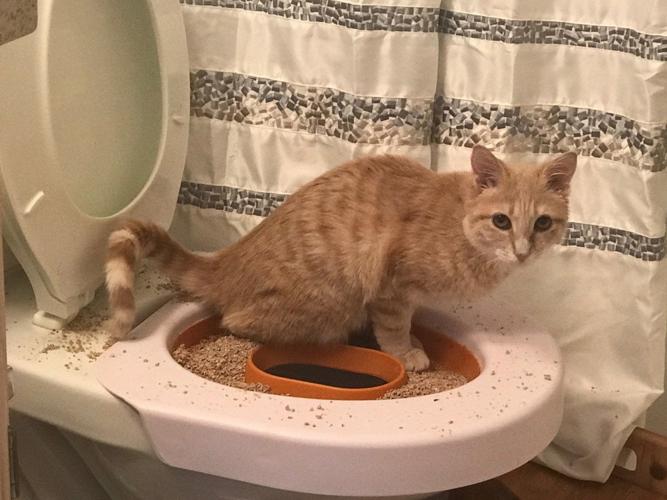Prevent Clogs and Damage: Never Flush Cat Poop Down Your Toilet - Expert Insights
Prevent Clogs and Damage: Never Flush Cat Poop Down Your Toilet - Expert Insights
Blog Article
Everybody seems to have their unique opinions about Can You Flush Cat Poop Down The Toilet?.

Introduction
As feline owners, it's important to bear in mind how we get rid of our feline close friends' waste. While it might appear convenient to purge cat poop down the bathroom, this method can have destructive consequences for both the environment and human health and wellness.
Alternatives to Flushing
Luckily, there are much safer and a lot more accountable ways to throw away pet cat poop. Take into consideration the following options:
1. Scoop and Dispose in Trash
One of the most typical approach of taking care of pet cat poop is to scoop it into a biodegradable bag and throw it in the trash. Be sure to utilize a devoted trash scoop and get rid of the waste quickly.
2. Use Biodegradable Litter
Choose biodegradable feline trash made from materials such as corn or wheat. These trashes are environmentally friendly and can be safely gotten rid of in the trash.
3. Bury in the Yard
If you have a backyard, think about hiding cat waste in a designated area away from veggie yards and water resources. Make sure to dig deep enough to stop contamination of groundwater.
4. Mount a Pet Waste Disposal System
Buy a pet garbage disposal system especially created for feline waste. These systems use enzymes to break down the waste, lowering odor and ecological impact.
Wellness Risks
In addition to environmental worries, flushing cat waste can also posture wellness risks to humans. Feline feces may have Toxoplasma gondii, a bloodsucker that can trigger toxoplasmosis-- a potentially extreme disease, specifically for pregnant females and individuals with damaged body immune systems.
Environmental Impact
Flushing pet cat poop introduces hazardous virus and parasites into the water, positioning a substantial danger to aquatic environments. These contaminants can adversely impact aquatic life and compromise water high quality.
Conclusion
Liable animal possession extends beyond providing food and sanctuary-- it additionally involves correct waste monitoring. By refraining from purging feline poop down the commode and selecting alternative disposal techniques, we can minimize our environmental impact and protect human wellness.
Why Can’t I Flush Cat Poop?
It Spreads a Parasite
Cats are frequently infected with a parasite called toxoplasma gondii. The parasite causes an infection called toxoplasmosis. It is usually harmless to cats. The parasite only uses cat poop as a host for its eggs. Otherwise, the cat’s immune system usually keeps the infection at low enough levels to maintain its own health. But it does not stop the develop of eggs. These eggs are tiny and surprisingly tough. They may survive for a year before they begin to grow. But that’s the problem.
Our wastewater system is not designed to deal with toxoplasmosis eggs. Instead, most eggs will flush from your toilet into sewers and wastewater management plants. After the sewage is treated for many other harmful things in it, it is typically released into local rivers, lakes, or oceans. Here, the toxoplasmosis eggs can find new hosts, including starfish, crabs, otters, and many other wildlife. For many, this is a significant risk to their health. Toxoplasmosis can also end up infecting water sources that are important for agriculture, which means our deer, pigs, and sheep can get infected too.
Is There Risk to Humans?
There can be a risk to human life from flushing cat poop down the toilet. If you do so, the parasites from your cat’s poop can end up in shellfish, game animals, or livestock. If this meat is then served raw or undercooked, the people who eat it can get sick.
In fact, according to the CDC, 40 million people in the United States are infected with toxoplasma gondii. They get it from exposure to infected seafood, or from some kind of cat poop contamination, like drinking from a stream that is contaminated or touching anything that has come into contact with cat poop. That includes just cleaning a cat litter box.
Most people who get infected with these parasites will not develop any symptoms. However, for pregnant women or for those with compromised immune systems, the parasite can cause severe health problems.
How to Handle Cat Poop
The best way to handle cat poop is actually to clean the box more often. The eggs that the parasite sheds will not become active until one to five days after the cat poops. That means that if you clean daily, you’re much less likely to come into direct contact with infectious eggs.
That said, always dispose of cat poop in the garbage and not down the toilet. Wash your hands before and after you clean the litter box, and bring the bag of poop right outside to your garbage bins.
https://trenchlesssolutionsusa.com/why-cant-i-flush-cat-poop/

I'm just very taken with Can You Flush Cat Poop Down The Toilet? and I hope you enjoyed reading our entry. Enjoyed reading our content? Please share it. Let somebody else check it out. Thanks a bunch for your time. Come back soon.
Book-Now Report this page